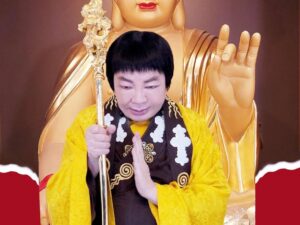SB31(A)-A Journey through Shakyamuni Buddha’s Early Suttas (Nikayas or Agamas)-I
- Description
- Curriculum
- Reviews

This course offers a journey through some of the Pali suttas, the earliest known recorded discourses of Shakyamuni Buddha. These talks give us a foundational understanding for all further development. They are like the structural framework of a house. If the structure is sound, no matter how tall or wide the building, it will be secure. But, if one builds a beautiful building on a shaky foundation, when the winds come, the building will collapse.
This helps us understand seemingly contradictory teachings as we progress on the path. They are not contradictory as it may seem. Rather, as we progress, complexities in matters are revealed and corresponding remedies are expounded. So, the teachings expand from relative to ultimate views as we are able to comprehend them. In this way, one teaching does not negate another any more than aerodynamics negates gravity. They simply operate within their own spheres of influence.
Bhikshunni Pannavati has selected nine suttas from the Majjhima Nikaya — the Middle Length Discourses. They are not too short, not too long! Enjoy listening to the stories and teachings first, then go back and read the discourse. Listen and read together the third time. Notice how our understanding of life and its challenges deepens each time; and how we will quickly see the dangers of samsaric existence. This opens the doorway to true renunciation and allows the joy of cultivation to become our activity of delight! The format for this course is repeated for an additional twenty-seven suttas in SB32(A), SB33(A), and SB34(A).
The Nikayas are Theravada texts from the The Pali Canon of the Digha Nikaya, the Majjhima Nikaya, the Makkhima Nikaya, the Samyutta Nikaya, the Anguttara Nikaya, and the Khuddaka Nikaya—The Khuddaka Nikaya also includes the Dhammapada, a popular collection of sayings of the Buddha in verse form that is included as an elective course as G47. This body of teachings represent what is sometimes called the “First Turning of the Wheel.” These early teachings were translated from Sanskrit into the Chinese Tripitaka as the Agamas.
H.H. Dorje Chang Buddha III told us in Learning from Buddha that “If you are a master with disciples, you must at least study in depth some sutras (suttas) and commentaries as a foundation, such as . . . the Agamas . . . , and others. Doing so will reduce the possibility of leading others astray in the process of teaching.”
Click on the “Curriculum” tab to see the suttas included in this course. If you have not registeredmbership and enroll in those courses. Click for detailed Users Guides under the “STUDENT MANUAL” in the website’s top menu bar for more information.
Other English translations of these suttas may be available, but we will use Bhikkhu Nanamoli’s and Bhikkhu Bodhi’s translation of The Middle Length Discourses of the Buddha: A Translation of the Majjhima Nikāya (The Teachings of the Buddha) for this course.
-
2SB31(A)-MN 62 – Maha-Rahulovada Sutta – The Greater Exhortation to Rahula
The Buddha teaches Rahula the meditation on the elements, mindfulness of breathing, and other topics
-
3SB31(A)-MN 128 – Upakkilesa Sutta – Obscurations
Meditative progress on the divine eye
-
4SB31(A)-MN 66 – Latukikopama Sutta – The Simile of the Quail
The importance of abandoning all fetters, no matter how harmless or trifling that may seem
-
5SB31(A)-MN 2 – Sabbasava Sutta – All the Taints
Seven methods for retraining and abandoning the taints.
-
6SB31(A)-MN 1 – Mulapariyaya Sutta – The Root of All Things
The Buddha explains the four types of individuals.
-
7SB31(A)-MN 19 – Dvedhavitakka Sutta – Two Kinds of Thought
The Buddha explains the way to overcome unwholesome thoughts and replace them with wholesome thoughts.
-
8SB31(A)-MN 20 – Alagaddupama Sutta – The Simile of the Snake
The Buddha speaks about clinging to views and the skill needed to understand right view.
-
9SB31(A)-MN 114 – Sevitabbasevitabba Sutta – What Should and Should Not Be Cultivated
The Buddha sets up a framework on things to be cultivated or avoided, and Venerable Sariputra volunteers to elaborate.
-
10SB31(A)-MN 87 – Piyajatika Sutta – Born From the Beloved
The Buddha teaches on sorrow and grief that arise from those who are dear.




